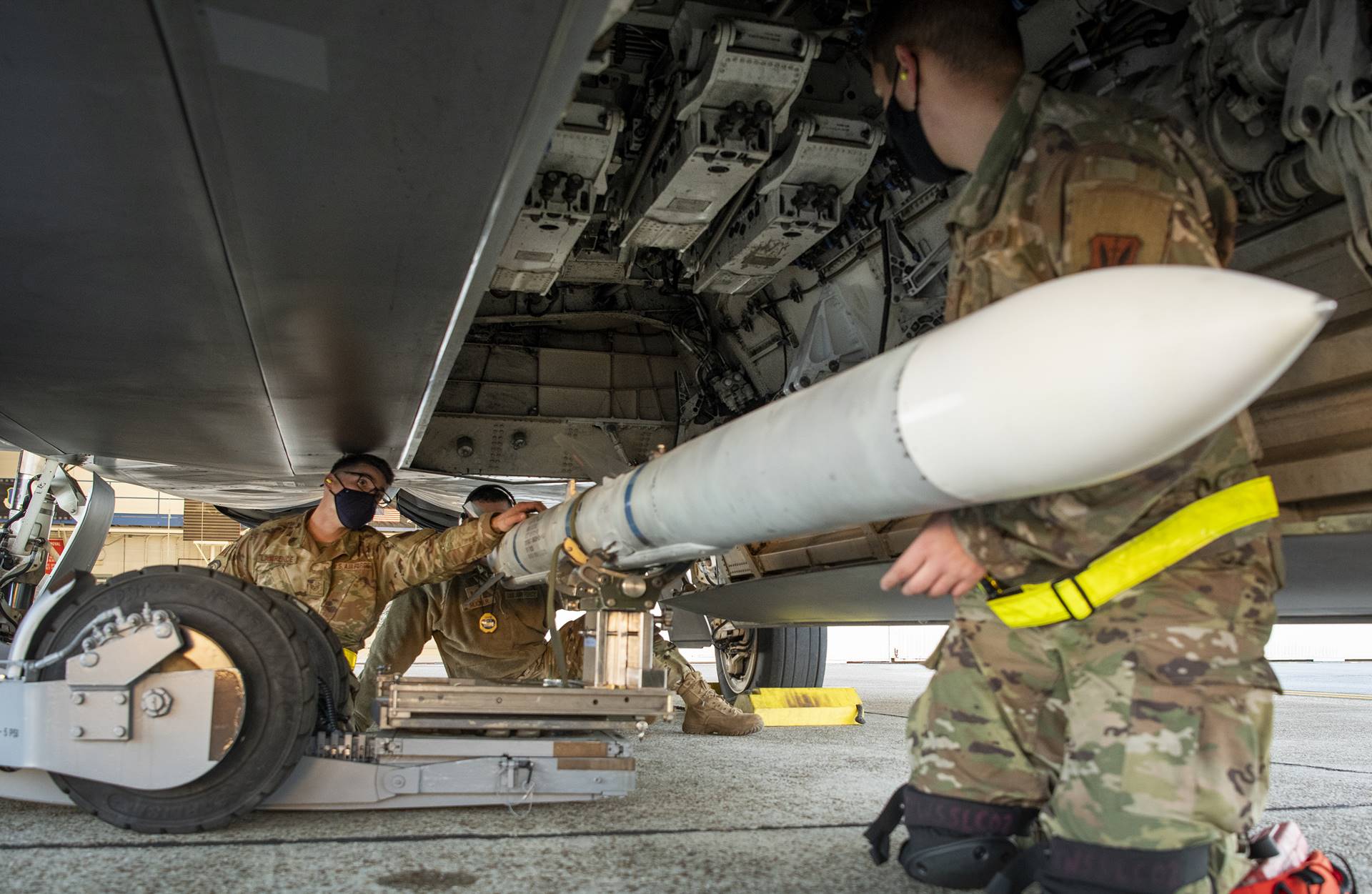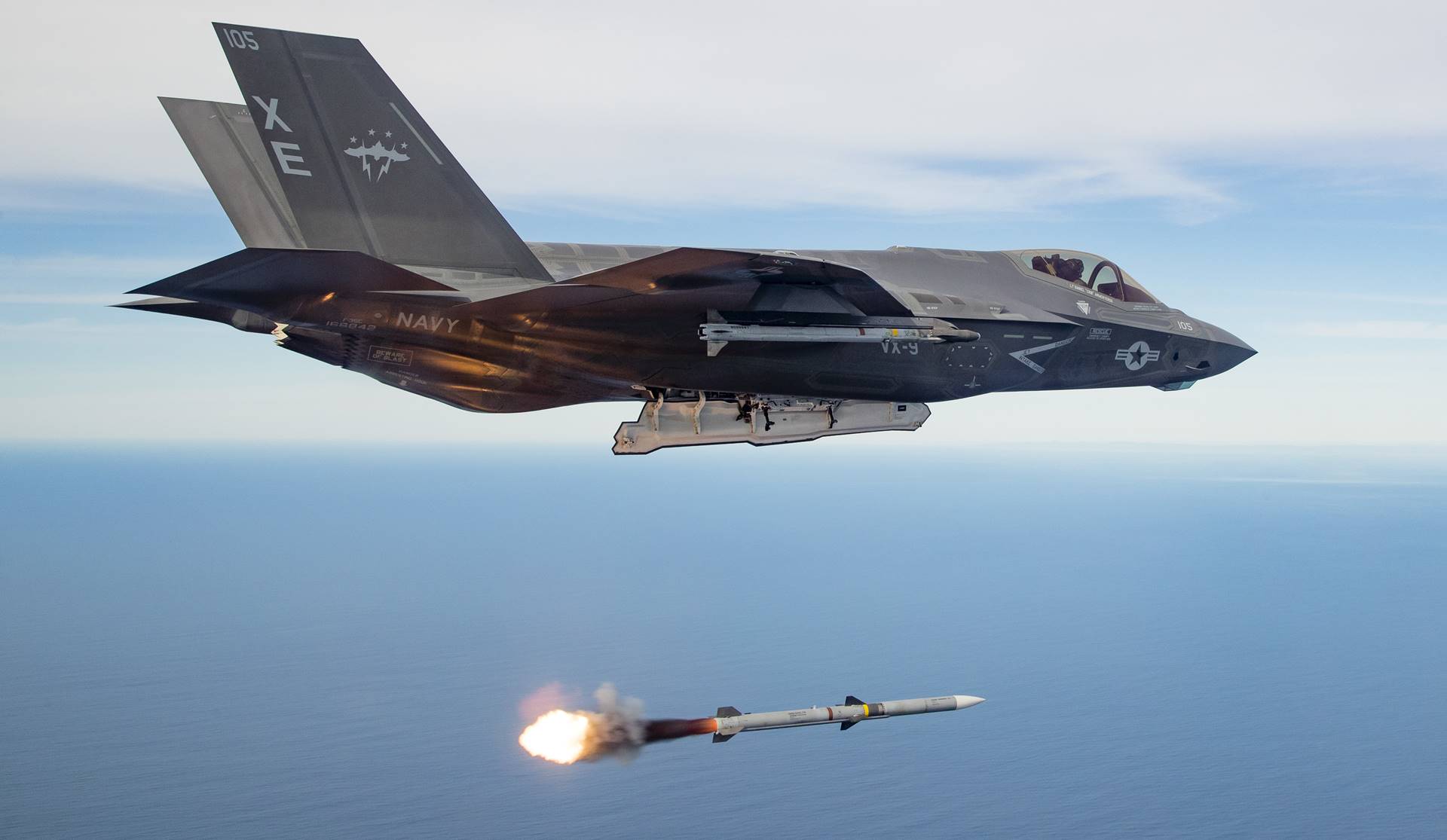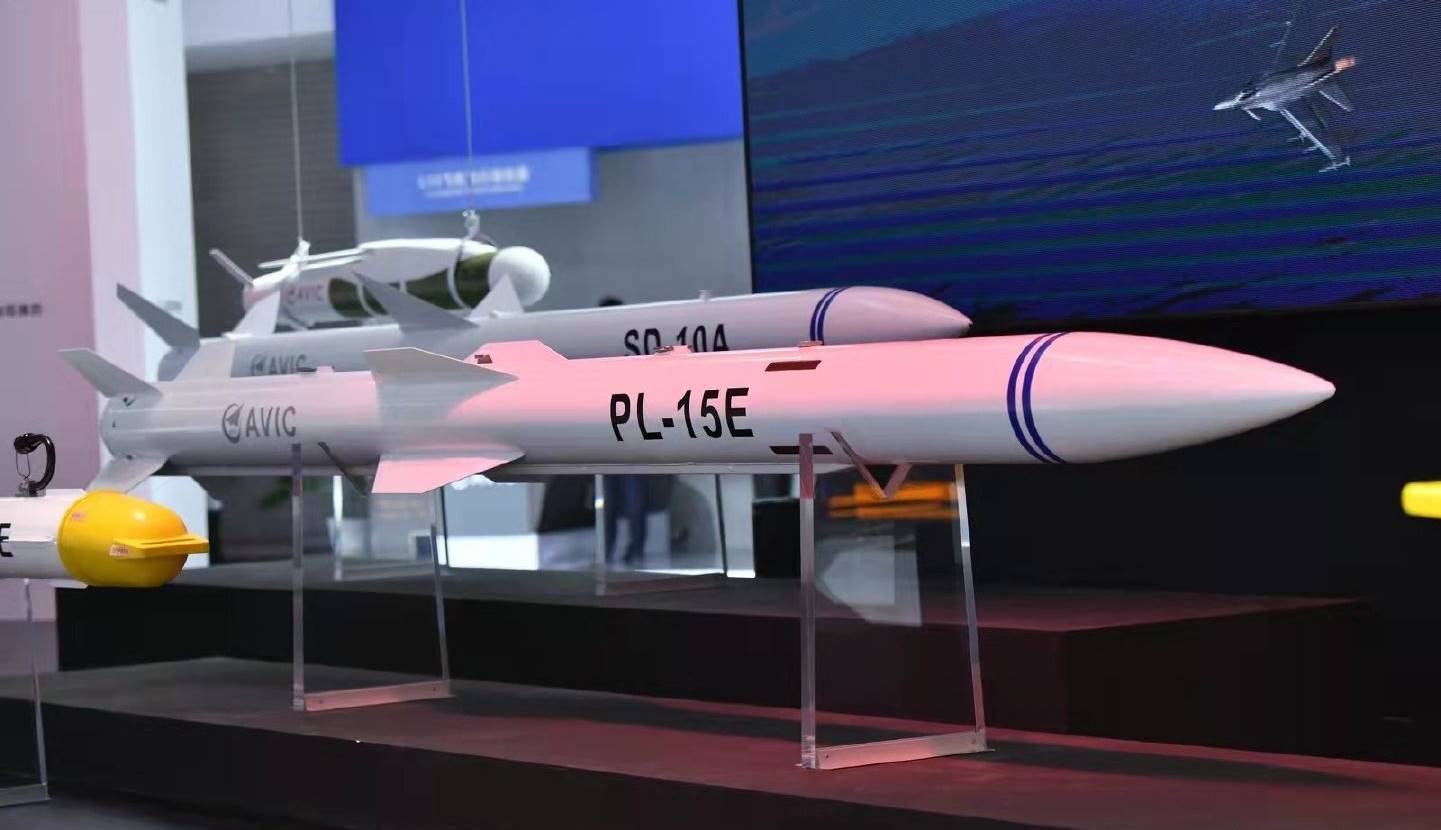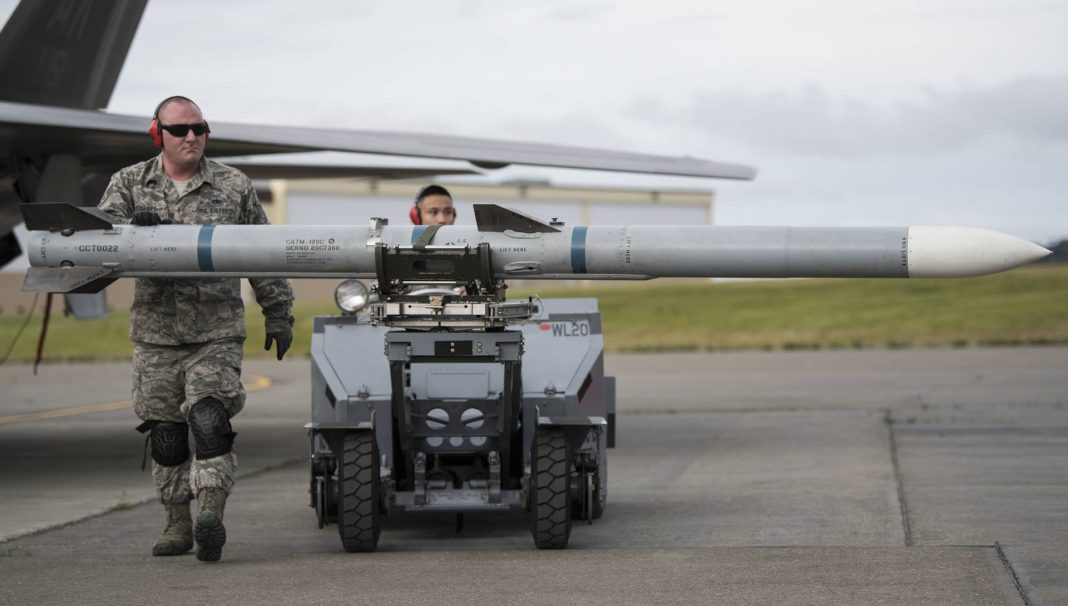The AIM-120 AMRAAM is the most advanced air-to-air missile of choice for America and allied militaries.
When fighter pilots take to the skies, they need to fly with unwavering confidence and know that the systems they rely on will help them succeed during each and every mission.
The ability to control the skies is critical to executing ground operations effectively. Advanced technologies and weapon systems enable seamless operation and engagement throughout the air domain’s battle space.
The AIM-120 AMRAAM, which stands for Advanced Medium-Range Air-to-Air Missile, is capable of all-weather, day-and-night operations and has a beyond-visual-range capability. It is scheduled to remain operational beyond 2050.

“The AMRAAM missile is arguably the most sophisticated air-to-air weapon in use today and for good reason. It has to be in order to address the complex threats we’re seeing from our adversaries,” said Paul Ferraro, president of Air Power for Raytheon Missiles & Defense.
The AIM-120 has a proven track record, having been test fired over 5,000 times and used in combat across the globe. The tests provide valuable feedback that contributes to ongoing updates and improvements to the missile’s performance.
“From those test shots, we get real-time data that we feed into digital models to see how the system stacks up against new or evolving threats,” said Steve Dickman, executive director for Air Dominance at Raytheon Missiles & Defense.
In use by 41 nations, the AIM-120 missile is flying on the F-15E Strike Eagle, F-16 Fighting Falcon, F/A-18 Super Hornet, F-22 Raptor, Eurofighter Typhoon, Saab JAS 39 Gripen, Panavia Tornado, and Harrier Jump Jet. It is also the only air-to-air missile qualified on the F-35 Lightning II.
AMRAAM is a follow-on to the AIM-7 Sparrow missile series. The missile is faster, smaller, and lighter, and has improved capabilities against low-altitude targets. It also incorporates a datalink to guide the missile to a point where its active radar turns on and makes a terminal intercept of the target. Additionally, an inertial reference unit and micro-computer system make the missile less dependent on the fire-control system of the aircraft.
Once the missile is launched, it can operate autonomously to locate and destroy its target. The missile’s active radar guides it to intercept, which is known as “fire-and-forget”. This feature allows the aircrew to aim and fire several missiles simultaneously at multiple targets, and break a radar lock after the missile seeker goes active and guides itself to the targets.

Furthermore, The missile also features the ability to “Home on Jamming”, giving it the ability to switch over from active radar homing to passive homing – homing on jamming signals from the target aircraft. Software on board the missile allows it to detect if it is being jammed, and guide on its target using the proper guidance system.
The AMRAAM missile has several variants, each with unique capabilities and improvements. The initial production version of the missile was the AIM-120A, which entered service in 1991. It has a range of approximately 30 miles and features an active radar seeker.
The AIM-120B is an upgraded and reprogrammable variant of the original missile, with a range of approximately 40 miles.
The AIM-120C incorporates smaller control surfaces for internal carriage on the F-22 and F-35, along with a high-angle off-boresight launch capability. It has a range of approximately 50 miles.
The AIM-120D offers improved range, GPS-assisted guidance, updated data links, jam resistance, and greater lethality. It has a range of over 100 miles and can reach speeds of up to Mach 4.
The AMRAAM has been used in several engagements, achieving 16 air-to-air kills in conflicts over Iraq, Bosnia, Kosovo, India, and Syria. Operationally, the missile, which was designed for beyond-visual-range combat, has a kill probability of 0.59. The targets included six MiG-29s, a MiG-25, a MiG-23, two Su-22s, a Galeb, and a US Army Blackhawk that was targeted by mistake.
It keeps pace with advanced threats.
Raytheon is driving new capability into the AMRAAM missile with F3R, or form, fit and function refresh, using modeling to design, analyze, verify and validate the system. The F3R missile will have improved guidance circuitry and software to address rapidly evolving threats.

The U.S. Air Force have completed the first in a series of guided live-fire tests for F3R, moving it one step closer to Initial Operational Capability – the military’s way of saying it is ready to deploy.
In lockstep with F3R, the system is getting additional capability with software updates known as System Improvement Program-3, or SIP-3, to improve the weapon’s guidance, range and performance.
And the advancements don’t stop there. The AMRAAM missile is getting better with SIP-4, which is really when all the pieces start to come together, It (SIP-4) takes full advantage of the new processing power and speed that the new hardware brings.
AIM-120 AMRAAM Ground-Launched Systems
The Norwegian Advanced Surface-to-Air Missile System (NASAMS), developed by Kongsberg Defence & Aerospace, was introduced in 1994-1995. The system comprises several towed batteries containing six AMRAAMs launching canisters with integrated launching rails, along with separate radar trucks and control station vehicles.
As part of the Complementary Low-Altitude Weapon System and Surface Launched AMRAAM (SLAMRAAM) programs, the US Marine Corps and the US Army conducted tests of launching AIM-120 missiles from a six-rail carrier mounted on a Humvee. However, both programs were eventually canceled due to budgetary cuts.

A more recent version of the system is the High Mobility Launcher for the NASAMS, which utilizes a Humvee as the launch vehicle. The launcher contains four AMRAAMs and two optional AIM-9X Sidewinder missiles. This configuration provides increased mobility, flexibility, and rapid response capability, making it an effective air defense solution for a wide range of scenarios.
AIM-120 AMRAAM-ER
Following the cancellation of SLAMRAAM funding in 2011, the development of the NASAMS version restarted in 2014. In February 2015, Raytheon announced the AMRAAM-Extended Range missile option for NASAMS.
The AMRAAM-ER is a New, Ground-launched solution that is designed to intercept targets at longer distances and higher altitudes.
The AIM-120 Extended Range features a larger rocket motor and other enhancements that greatly expand the NASAMS engagement envelope, with a 50% increase in range and a 70% increase in altitude.
The missile was testfired at Andøya Space Center in May 2021. The test saw a hybrid missile comprising an AIM-120C7 seeker and warhead with the rocket motor, rear airframe, and control section of the ESSM – fired from a Mark 2 canister launcher.

“When fielded, AMRAAM-ER will deliver a new land-based missile defense capability to warfighters through its enhanced speed, range, altitude, and maneuverability,” Paul Ferraro said in a release. “We are now one step closer to certification, production and final integration of the weapon into NASAMS.”
NASAMS is owned by 12 countries and has been integrated into the U.S. National Capital Region’s air defense system since 2005.
AIM-120 AMRAAM Replacement
The Air Force is moving quickly to develop a new air-to-air missile that would eventually replace the AMRAAM.
The forthcoming AIM-260 Joint Advanced Tactical Missile (JATM) program is proceeding “extremely fast” to counter the Chinese air-to-air missile, said Program Executive Officer for Command, Control, Communications, Intelligence and Networks, Brig. Gen. Anthony Genatempo, speaking with reporters Thursday at the service’s Life Cycle Industry Days conference.
The AIM-260 would initially be fielded aboard the F-22 Raptor, F/A-18 Super Hornet, F-15EX Eagle II, and F-35 Lightning II.
The idea currently is that JATM production would begin right as AIM-120 production started to tail off, for seamless delivery of missiles to combatant commands. The last production buy for AMRAAM is expected in the fiscal year 2026.

The PL-15 missile, which the JATM must counter, is a Chinese missile similar in shape and dimensions to the AMRAAM. The missile showed in the weapon bays of the Chengdu J-20 stealth fighter of the People’s Liberation Army Air Force during Zhuhai Airshow in 2018, is reported to have a range in excess of 100 nautical miles and a top speed of Mach 5. It has a dual-thrust solid propellant rocket engine that uses two different types of fuel, one for the boost phase immediately after launch and one for the sustainment phase that allows the missile to maintain its high speed without losing energy before reaching the target

